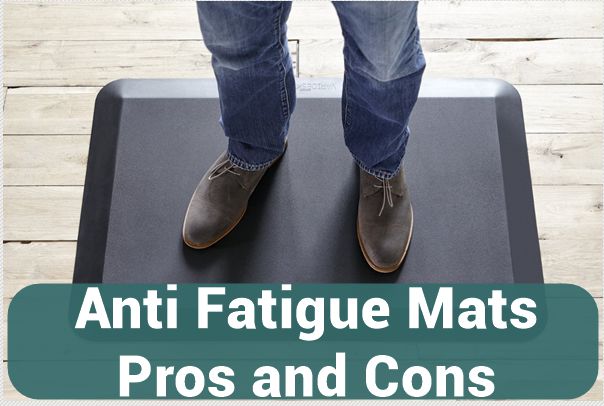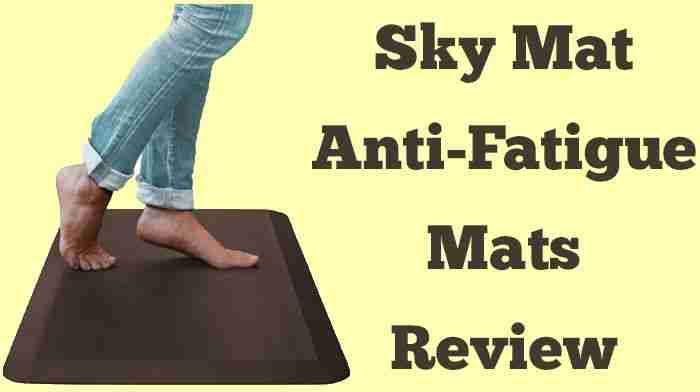Home » Anti fatigue mats » Pros and Cons of Anti Fatigue Mats – Are you tired of standing on your feet all day? Do you feel like you need a nap after just a few hours of work? Well, fear not my friends, because anti-fatigue mats are here to save the day! These magical mats claim to reduce fatigue and improve productivity, but are they really worth the investment? Let’s weigh the pros and cons of anti-fatigue mats and see if they’re the solution to all our tired feet problems. Spoiler alert: there may be some unexpected cons that will have you laughing out loud. So, grab a cup of coffee and let’s dive into the world of anti-fatigue mats!
Pros and Cons of Anti Fatigue Mats
Before getting on to the negative side, I’ll be optimistic enough to add up some major Pros of using anti-fatigue mats. So, HERE YOU GO!
Advantages of Anti Fatigue Mats
1. Lesser Number Of Absentees From Offices
According to research conducted in the UK’ after the installation of anti-fatigue mats at a working place, worker’s absentees were significantly reduced. Lesser workers felt the need to take a day off because they were tired and wanted stress relieved.
This caused a positive impact on the office’s overall environment and workflow. I can count this as a major pro of anti-fatigue mats because a little investment helped the workers to give maximum output!
2. An Indirect Treatment For Itchy And Burning Feet
Anti-fatigue mats not only give temporary comfort, but their long term use is beneficial for the joints and muscles too. Those suffering from blisters, bumps, or heel spur can get a faster recovery if they spend most of their time resting their feet on soft textured anti-fatigue rubber/ foam mats.
This would also not cause them trouble while standing for a longer period of time at the workplace or in the kitchen while cooking food for the guest.
3. More Durable Than An Average Entrance Mat
Anti-fatigue mats are considered to be more durable than typical rubber mats. Most of the good quality anti-fatigue mats are composed using PVC i.e., polyvinyl chloride material that is very long-lasting if maintained adequately during usage.
The standard life of an anti-fatigue mat is two years to the maximum. However, there are mats by brands that claim to have a design life of about 10 years too! So that’s another basic pro of anti-fatigue mats.
You invest in them once, and then would not have to worry about your home’s or your office’s flooring for a few years!
4. Most of the Mats are Stain Resistant’ and if not; Easy to Clean!
Anti Fatigue mats are commonly found to be stain resistant. That is, they won’t get stain on your cold coffee or soup sauces and can gently be cleaned.
However, some of the anti-fatigue mats don’t have this property, but nevertheless, all of these rubber mats are found to be SUPER HUMAN-FRIENDLY, i.e., they can be cleaned and wiped off very easily!
I think this is a great advantage, as you won’t have to worry about cleaning their anti-fatigue mat through special treatment.
Disadvantages of Anti Fatigue Mats
1. Foam Matting Sinks Easily; Can’t Bear Heavy Loads
If your anti-fatigue mat is made up of a foamy material, it will bottom out very quickly. Anti-fatigue mats are designed as such, not to bear heavy loads.
If weighted machinery is passed over them more often, the chances are that they might wear out sooner. That’s a major drawback of using anti-fatigue mats.
2. Anti Fatigue Mats Don’t Host Much Stability
Unlike common entrance mats, anti-fatigue mats are light in weight and may slip away when you try to move in a rush over them. This leads to tripping of people as well as equipment sometimes.
To avoid such circumstances, you need to do proper research before buying anti fatigue mats and also need to investigate the surface texture of the mat’s back. It should have enough friction and must be rough in order to hold the mat in place and hence host a good amount of stability.
Conclusion
In conclusion, anti-fatigue mats are a great investment for those who spend long hours standing on hard surfaces. They provide comfort and support, reducing the risk of fatigue and injury. However, they do have their downsides, such as being a tripping hazard and potentially causing foot odor. But let’s be real, if you’re standing on a mat all day, foot odor is probably the least of your worries. So, if you’re looking for a way to make your workday a little more comfortable, go ahead and invest in an anti-fatigue mat. Just make sure to watch your step and maybe invest in some odor-eating shoe inserts.



